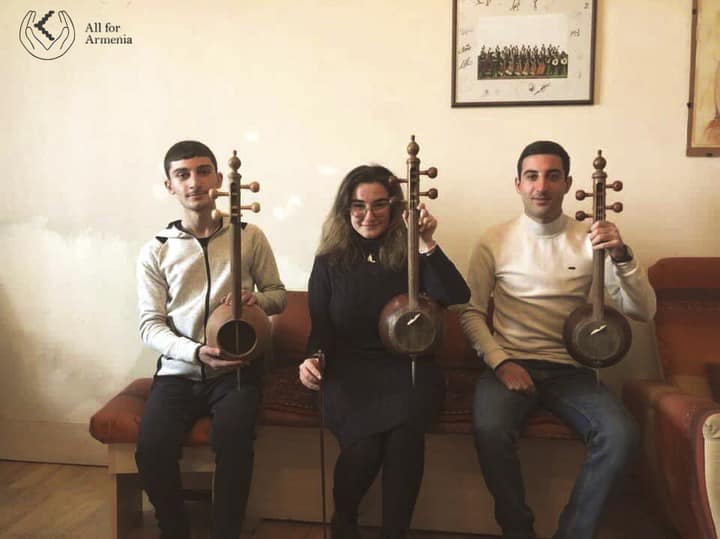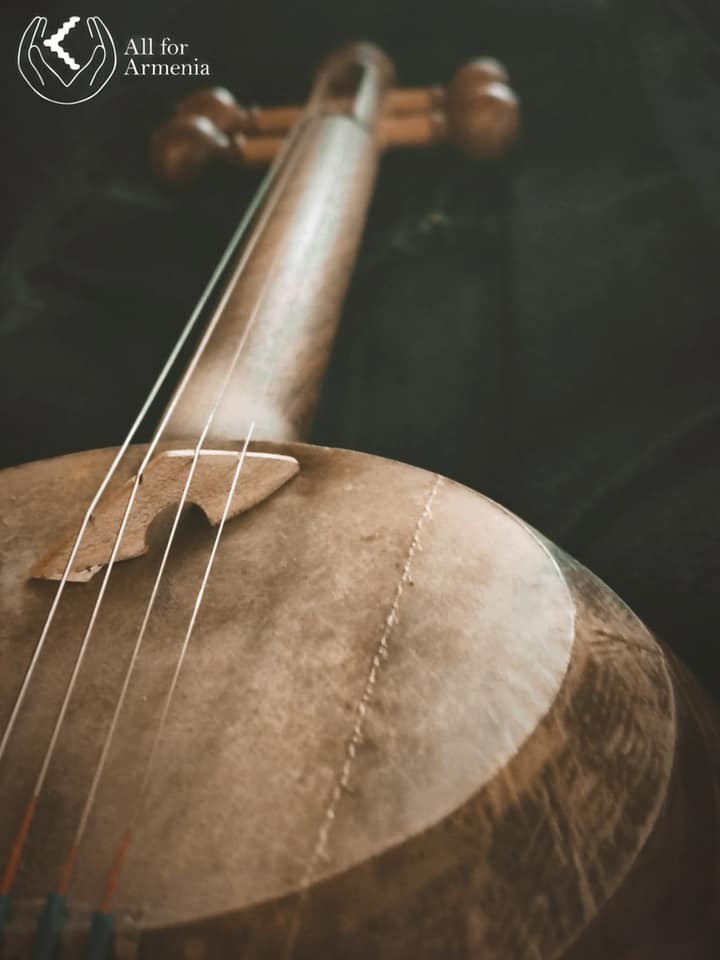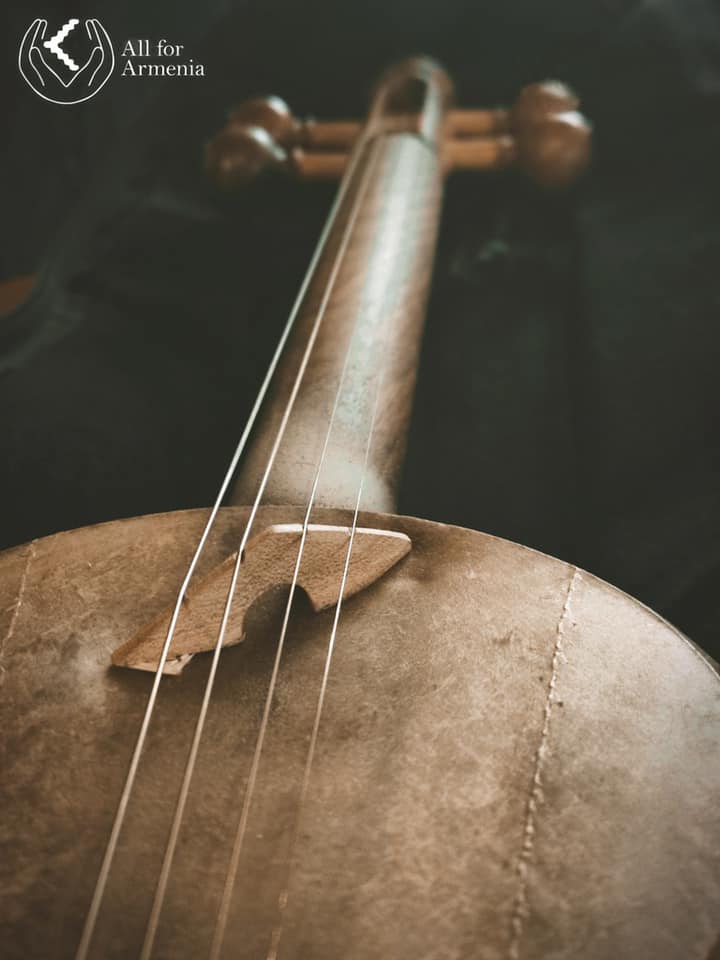Learning about traditional Kamancha
Today we chatted with All for Armenia team member Magy Avedissian.
Magy is an Armenian-American from California, and currently serves on our on-site team in Armenia. Since our recent mission trip to Gyumri, Magy has picked up a new passion: Kamancha, a traditional bowed string instrument dating back over 1,000 years.
AFA: When and how did you start playing the Kamancha?
Magy: About two weeks ago, I decided to purchase a Kamancha. All for Armenia had our Gyumri and Artik mission the previous weekend, during which we invited some esteemed Armenian musicians to perform for a humble audience of Artsakh refugees/impactees in three different centers, totaling over 110 children. During the trip, I met Erik, an 18 year-old expert in the art of playing Kamancha. I learned that the Kamancha is a classic Armenian instrument, painstakingly made through traditional techniques that go back over a millenium. Erik and I began to talk about his experience playing the instrument, which culminated in him expressing his concern over there not being many players in Armenia or of Armenian origin.
AFA: What motivated you to pick up the Kamancha?
M: My conversation with Erik was a bit of a wake-up call for me. I started to do a bit of research, which brought up the courage to purchase a Kamancha of my own. The instrument is made in Armenia through ancient techniques by a varpet (վարպետ), or master. Today, there are very few living varpets who are masters of the art of making the Kamancha. It is an honor to carry this legacy forward by playing the instrument. Erik guided me along the path of selecting and purchasing a Kamancha and is now acting as my teacher.
AFA: What does learning the Kamancha mean for you?
M: One of the unique components of Armenia’s antiquity is its traditional music, which we unfortunately don’t see enough people play anymore. I have AFA to thank for helping me find this new passion. I have to say, it’s quite unique how an organization that I joined with the intention of positively impacting others has very nearly and dearly impacted me, and resulted in me purchasing this instrument. It’s also satisfying to see how AFA’s greater mission to preserve and promote Armenian cultural heritage has influenced me in this way.
AFA: What is playing the Kamancha like?
M: It is distinctly different from any other instrument I have touched, but I am excited for the journey of learning more about it. I encourage others to seek out different forms of Armenian antiquity and see if they find a passion for them. Each of us contributing in this way adds up to make a significant impact in the long run. The more you feel your culture is in danger, the more precious it becomes, and the more important it becomes to carry it on. Now, if I can just get my notes right…!



